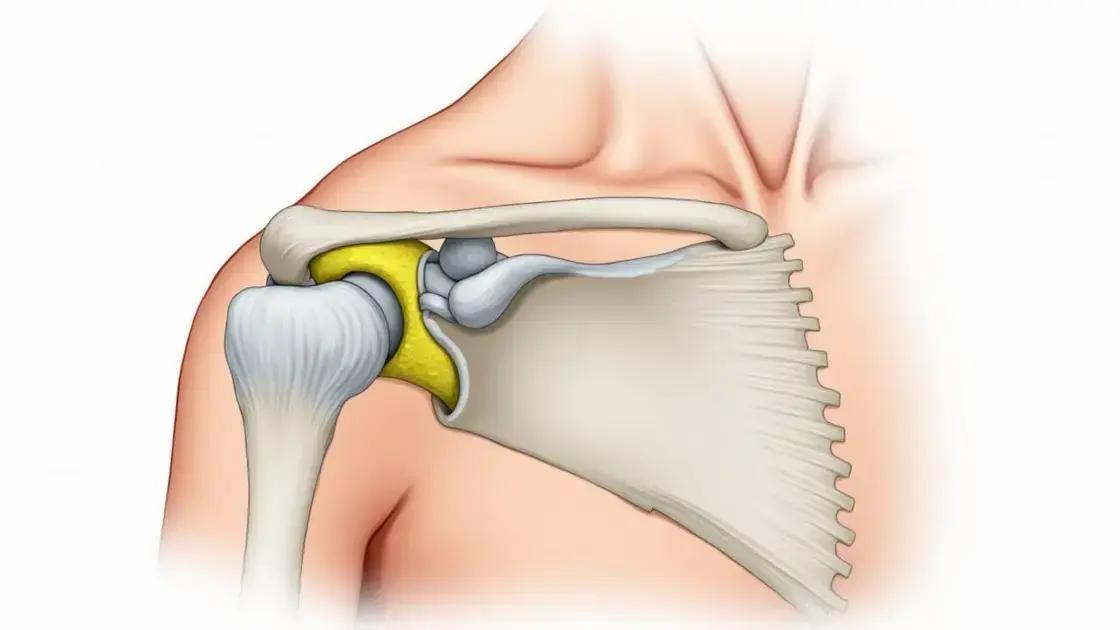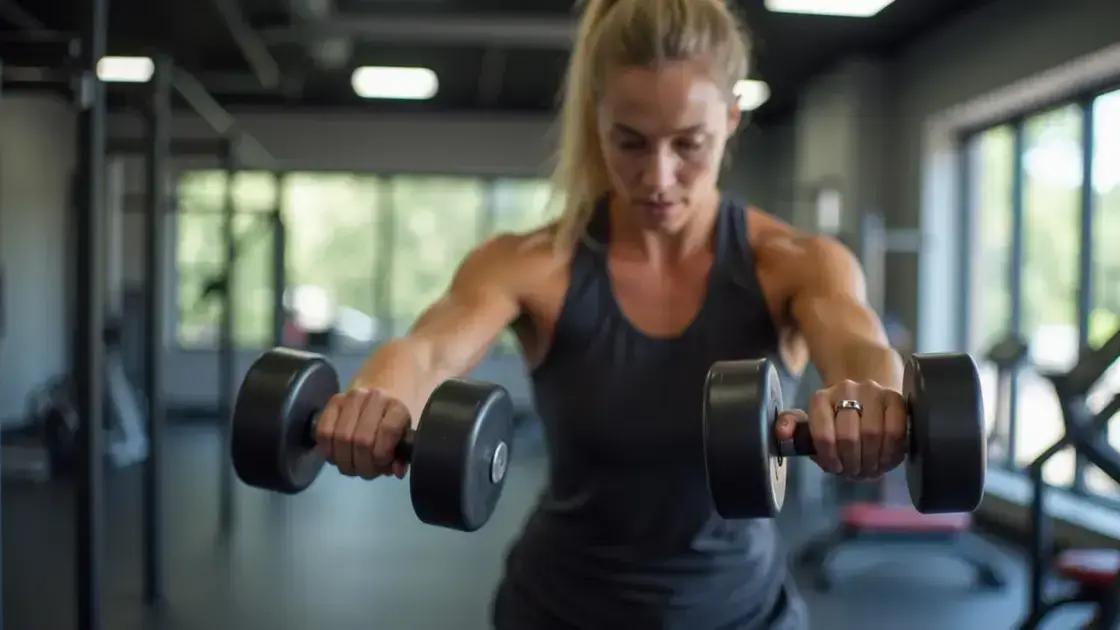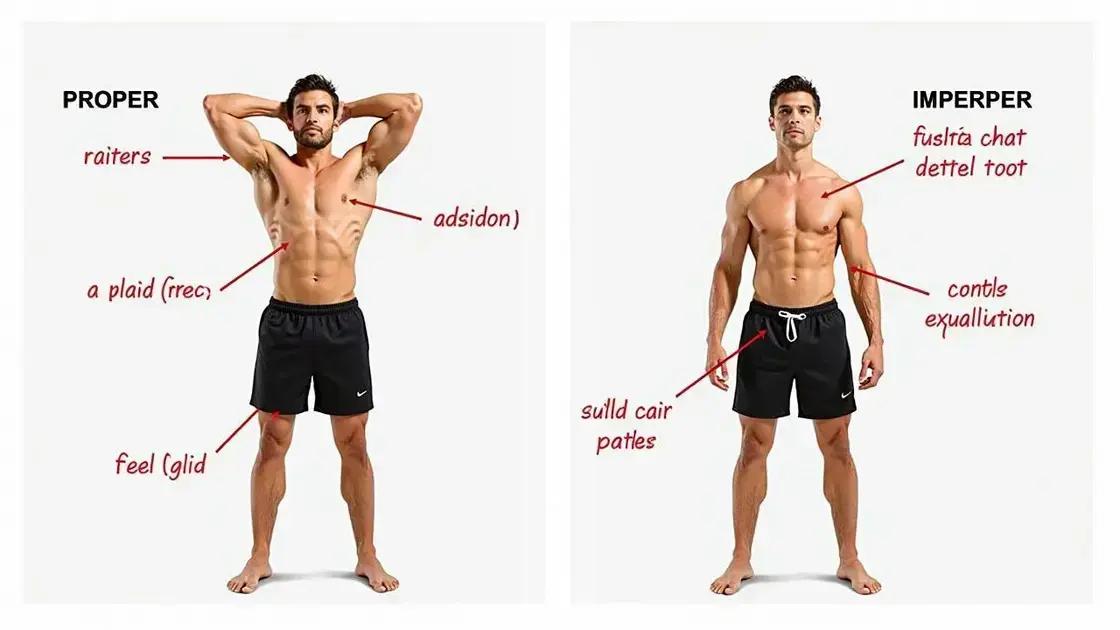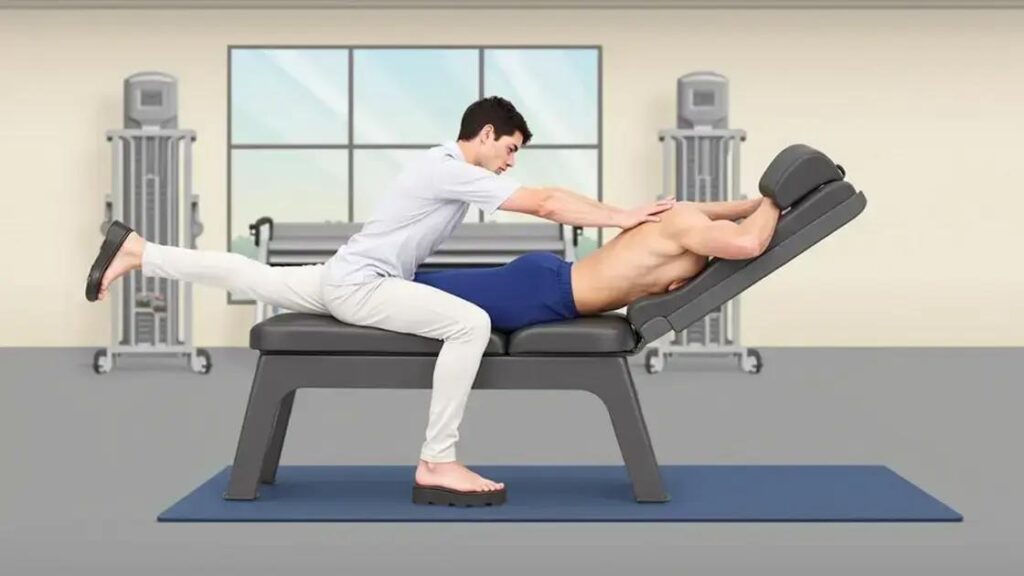To build shoulder stability with controlled movements, focus on understanding shoulder anatomy, avoiding common training mistakes, and incorporating specific exercises such as external rotations and scapular push-ups into your routine for optimal strength and injury prevention.
Learning how to build shoulder stability with controlled movements is crucial for maintaining a healthy, injury-free body. Shoulders are often vulnerable due to their range of motion and the complex mechanics involved. In this article, we’ll dive into the fundamentals of shoulder stability, explore controlled movements that enhance strength, identify common mistakes during exercises, and provide effective techniques to improve your shoulder stability effectively. Let’s get started on the path to better shoulder health!
Understanding Shoulder Stability

Shoulder stability refers to the ability of your shoulder joint to maintain its position during movement. This stability relies on the coordinated function of muscles, tendons, ligaments, and bones. When your shoulder is stable, it can move freely and efficiently without risking injury.
The Anatomy of Shoulder Stability
Your shoulder is a ball-and-socket joint, which means the rounded end of the arm bone fits into the shallow socket of the shoulder blade. This design allows for a wide range of motion but makes it more prone to instability. Key components that contribute to shoulder stability include:
- Rotator Cuff Muscles: These four muscles surround the shoulder joint and play a vital role in holding the arm bone in place.
- Scapular Stabilizers: These muscles help control shoulder blade movement, providing a stable base for arm movements.
- Ligaments: Strong connectors that support the shoulder joint, preventing excessive movement.
Why is Shoulder Stability Important?
Understanding shoulder stability is essential because it helps prevent injuries, enhances performance, and improves functional movements. A stable shoulder allows individuals to lift, push, pull, and throw without restrictions. It also aids in maintaining correct posture and reduces the risk of chronic shoulder pain.
Factors Affecting Shoulder Stability
Several factors can impact your shoulder stability, including:
- Muscle Imbalance: Weak or tight muscles around the shoulder can lead to instability.
- Injuries: Previous injuries can affect muscle coordination and joint function.
- Overuse: Repetitive movements can wear down stabilizing structures, leading to pain and instability.
By understanding shoulder stability and its components, you can take a proactive approach in maintaining strong and functional shoulders.
Controlled Movements for Strength

Controlled movements are key to building strength, especially in the shoulders. These movements help target specific muscles while minimizing the risk of injury. When performing shoulder exercises, focusing on controlled movements ensures that each repetition is effective and safe.
Importance of Controlled Movements
Using controlled movements enhances strength by promoting proper form and alignment. Rapid or uncontrolled movements can lead to poor technique, which increases the likelihood of injuries and decreases the effectiveness of your workout. By slowing down and focusing on each action, you can build a strong foundation for shoulder stability.
Key Techniques for Controlled Movements
Here are several techniques to keep in mind when practicing controlled movements for shoulder strength:
- Maintain Proper Posture: Keep your shoulders back and your chest up. This will help engage the right muscles and protect your joints.
- Focus on Breathing: Coordinate your movements with your breath. Inhale during preparation and exhale during exertion to create stability.
- Use a Slow Tempo: Perform exercises with a slow and steady tempo. This allows you to really feel the muscles working and ensures better control.
Exercises That Promote Controlled Movements
Here’s a list of effective exercises that utilize controlled movements:
- Shoulder presses: Start slowly and push the weights upwards in a controlled manner.
- External rotations: Use resistance bands for slow rotations, keeping elbows close to your body.
- Face pulls: Pull the band towards your face gradually; focus on squeezing the shoulder blades together.
- Scapular push-ups: Keep your core tight and move your shoulders up and down without bending your elbows.
Incorporating these controlled movements into your workout regime is essential for enhancing shoulder strength and overall stability.
Common Mistakes to Avoid

When learning how to build shoulder stability with controlled movements, it’s important to be aware of common mistakes that can hinder your progress. Avoiding these errors can improve your strength and reduce the risk of injury.
1. Ignoring Form
One of the biggest mistakes is neglecting proper form during exercises. Always focus on maintaining good posture. Poor form can lead to injuries and won’t effectively target the right muscles.
2. Using Too Much Weight
Many individuals lift weights that are too heavy for them. This can compromise control and form, increasing the likelihood of injury. Start with a manageable weight and gradually increase as your strength improves.
3. Skipping Warm-Ups
Failing to warm up properly is another frequent mistake. Warm-ups prepare your muscles and joints for exercise, reducing the risk of strains and sprains. Always include dynamic stretches or light activities focused on shoulder movements.
4. Neglecting the Rotator Cuff
Rotator cuff muscles are vital for shoulder stability, yet they are often overlooked. Include specific exercises to strengthen these muscles in your routine to enhance stability.
5. Rushing Through Reps
Performing exercises too quickly can lead to sloppy movements. Focus on controlled, deliberate repetitions to gain strength effectively and maintain joint stability.
6. Performing the Same Routine
Sticking to the same exercises can lead to plateaus. Change your routine regularly to engage different muscle groups, ensuring balanced strength development.
7. Overtraining
Lastly, overtraining without giving muscles sufficient recovery time can weaken your shoulders. Ensure you allow adequate rest between sessions targeting shoulder strength.
By avoiding these common mistakes, you can enhance your shoulder stability and achieve better results in your workouts.
Exercises to Enhance Stability

Doing specific exercises can significantly enhance shoulder stability. Here are some effective exercises to incorporate into your routine:
1. Shoulder External Rotation
Use a resistance band or light dumbbell. Start with your elbow at a 90-degree angle, keeping it close to your body. Rotate your forearm outward, maintaining the elbow position. Slowly return to the start. This exercise strengthens the rotator cuff.
2. Scapular Push-Ups
Begin in a standard push-up position. Keep your arms straight and let your chest sink downward, allowing your shoulder blades to come together. Push back up, spreading the shoulder blades apart. This will work your scapular stabilizers.
3. Plank to Downward Dog
Start in a plank position. Push your hips up and back into a downward dog position. Hold for a moment and return to the plank. This movement engages shoulder stabilizers and improves overall strength.
4. Wall Angels
Stand with your back against a wall. Raise your arms to form a “W” shape, keeping elbows and wrists against the wall. Slowly slide your arms up to a “Y” position, then return. This exercise improves shoulder mobility and stability.
5. Dumbbell Shoulder Press
Sitting or standing, hold a dumbbell in each hand at shoulder height. Press the weights overhead in a controlled motion, then lower them back to the starting position. This helps build overall shoulder strength.
6. Band Pull Aparts
Hold a resistance band with both hands at shoulder height. Stretch the band by moving your arms out to the sides, squeezing your shoulder blades together. This strengthens the upper back and shoulders effectively.
7. Turkish Get-Ups
Lie on your back holding a light dumbbell in one hand. Perform a series of movements to stand up while keeping the weight overhead. This exercise enhances stability, strength, and coordination.
By integrating these exercises into your fitness regimen, you can effectively enhance shoulder stability and improve performance in other physical activities.
In conclusion, building shoulder stability with controlled movements is essential for overall health and performance
By understanding the anatomy of the shoulder and the importance of stability, you can engage in effective training strategies. Focusing on controlled movements enhances your strength while preventing injuries.
Avoiding common mistakes and incorporating specific exercises can lead to significant improvements in your shoulder stability. Remember, consistent practice and proper form are vital in achieving your goals.
Implement these strategies into your fitness routine to protect your shoulders and elevate your physical capabilities. Take the journey towards stronger, healthier shoulders today!
FAQ – Frequently Asked Questions about Building Shoulder Stability
Why is shoulder stability important?
Shoulder stability is crucial for maintaining overall shoulder health, preventing injuries, and improving performance in physical activities.
What are common mistakes to avoid when training for shoulder stability?
Common mistakes include ignoring proper form, using weights that are too heavy, skipping warm-ups, and rushing through exercises.
What exercises can enhance shoulder stability?
Effective exercises include shoulder external rotations, scapular push-ups, wall angels, and band pull aparts.
How often should I train my shoulder stability?
To see improvements, aim to incorporate shoulder stability exercises into your routine 2-3 times a week, allowing for adequate rest and recovery.
Can I train shoulder stability at home?
Yes, many shoulder stability exercises can be performed at home with minimal equipment, such as resistance bands and light dumbbells.
What should I do if I experience pain during shoulder exercises?
If you experience pain during shoulder exercises, stop immediately and consult a healthcare professional or a physical therapist to avoid further injury.













